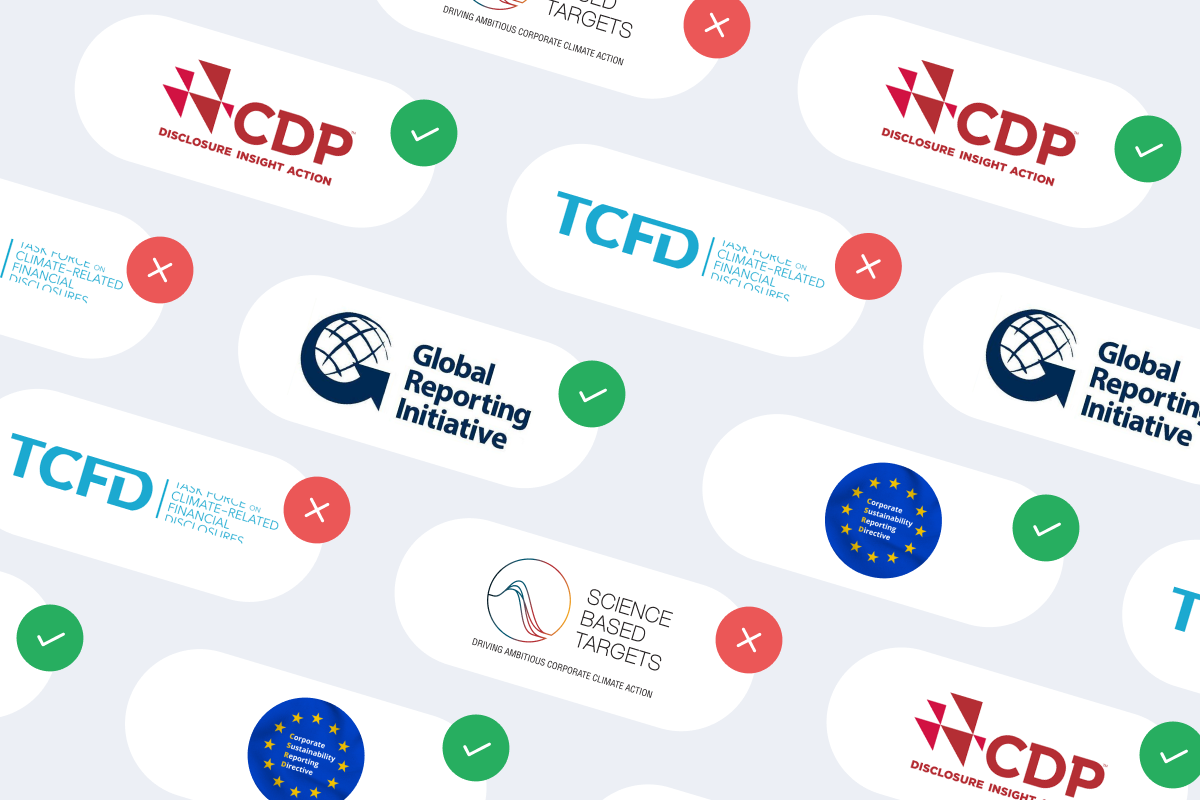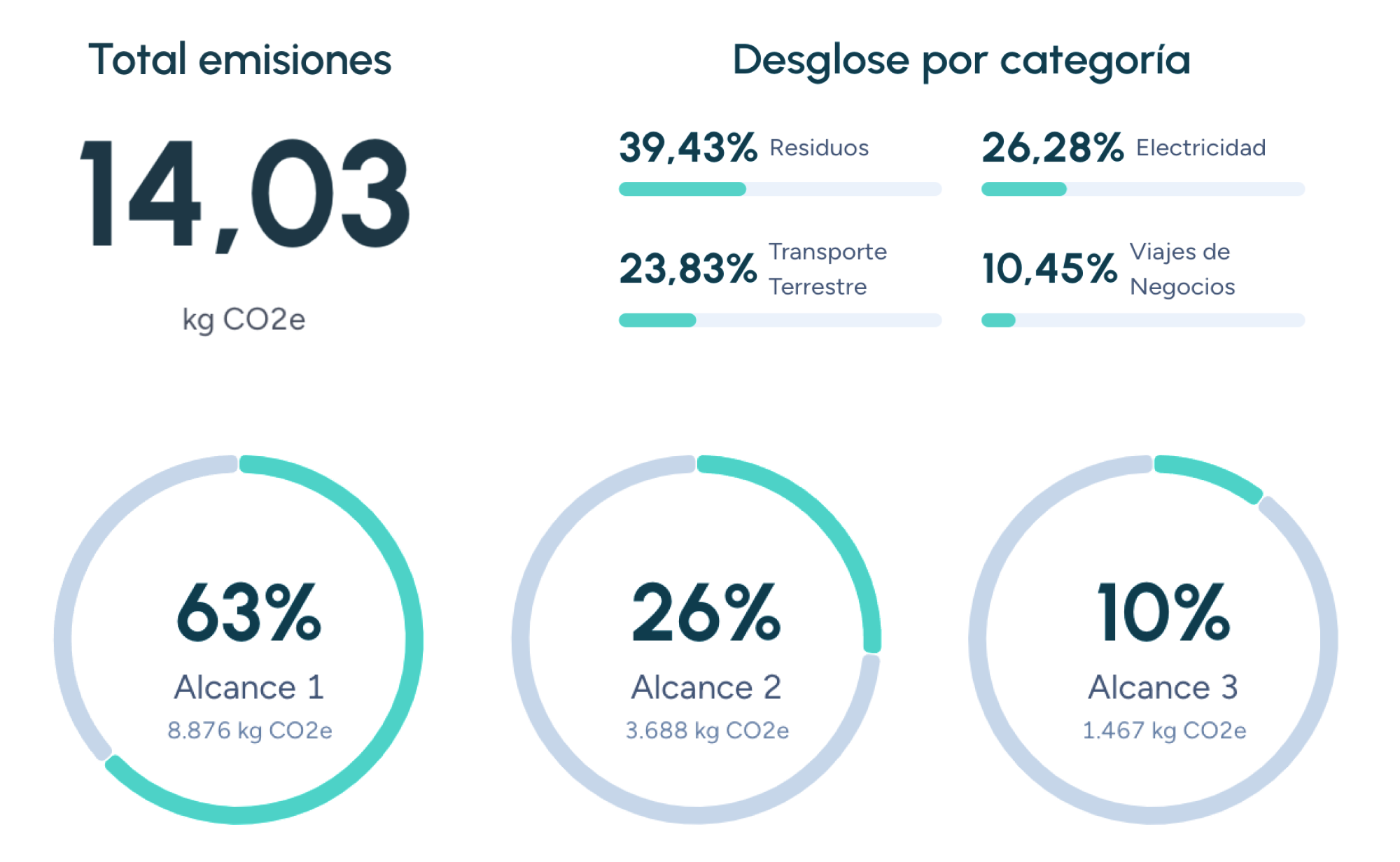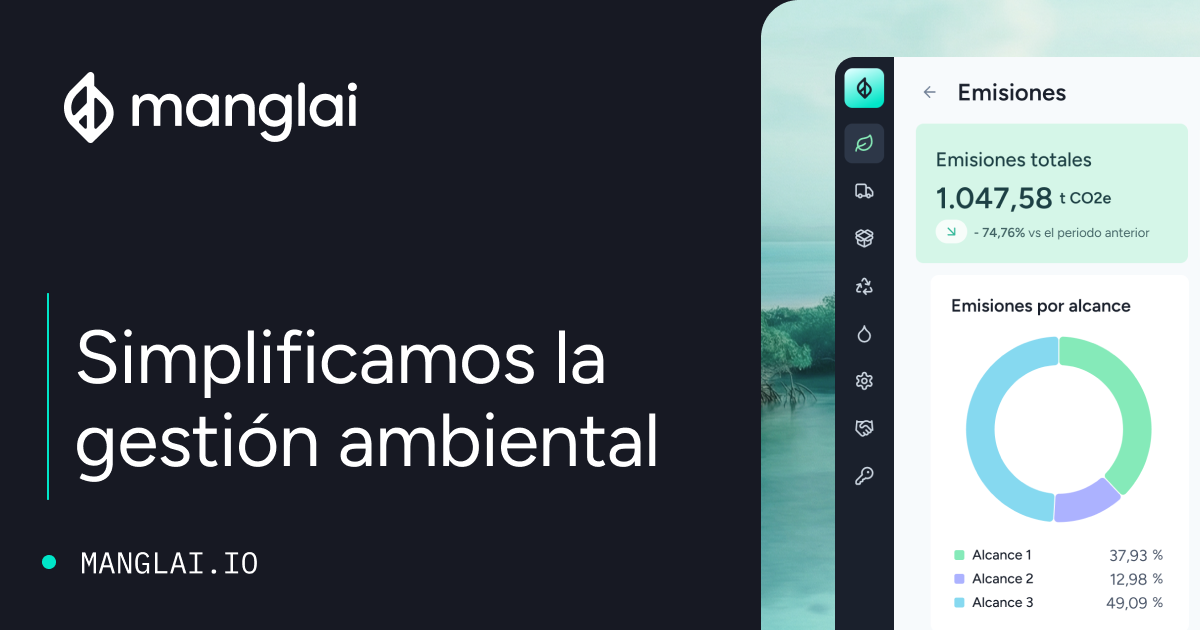S
Sustainable supply chain
The concept of a sustainable supply chain has gained relevance in recent years due to the growing need to combat climate change and promote responsible business practices. This term refers to supply chain management that minimizes negative environmental, social, and economic impacts, prioritizing sustainability at every stage of the process.
In the context of carbon footprint measurement, a sustainable supply chain plays a crucial role, as it allows companies to identify and reduce emissions associated with the products and services they use or produce.
What is a sustainable supply chain?
A sustainable supply chain is a comprehensive approach to managing the supply chain that seeks to balance economic needs with environmental and social responsibility. This involves considering factors such as:
- Reducing greenhouse gas (GHG) emissions at every stage of the supply chain.
- Efficient use of natural resources.
- Selecting suppliers that meet sustainability standards.
- Respecting labor and human rights throughout the supply chain.
- Implementing ethical and transparent business practices.
In practical terms, a sustainable supply chain not only benefits the environment but can also provide companies with competitive advantages, such as improving their reputation, accessing new markets, and reducing risks associated with environmental regulations.
The relationship between a sustainable supply chain and carbon footprint
A carbon footprint measures the total amount of GHG emissions generated directly or indirectly by an activity, product, or service. In the case of the supply chain, these emissions are mainly classified into Scope 1, Scope 2, and Scope 3 emissions, as defined by the GHG Protocol.
A sustainable supply chain focuses particularly on Scope 3 emissions, as they represent a significant portion of a company’s total carbon footprint. For example, a CDP (2021) study revealed that Scope 3 emissions can be up to 11 times higher than Scope 1 and 2 emissions combined.
Benefits of measuring and managing supply chain emissions
Measuring supply chain-related emissions allows companies to identify key areas for reducing their carbon footprint. The main benefits include:
- Process optimization: Identifying inefficiencies in the supply chain helps reduce costs and emissions.
- Regulatory compliance: Environmental regulations, such as the EU Taxonomy Regulation, increasingly require transparency in Scope 3 emissions.
- Reputation enhancement: Consumers and stakeholders value companies that demonstrate a commitment to sustainability.
- Access to financing: Many financial institutions prioritize investments in companies with sustainable supply chains.
Strategies for achieving a sustainable supply chain
Implementing a sustainable supply chain requires a strategic and collaborative approach:
1. Selecting sustainable suppliers
Choosing suppliers that adhere to sustainability standards is essential. Companies can establish specific criteria for supplier selection, such as the use of renewable energy or certification under standards like ISO 14001.
2. Digitalization and data analysis
Digitalizing the supply chain allows companies to collect and analyze real-time data, facilitating the identification of areas for improvement.
3. Collaboration with strategic partners
Sustainability in the supply chain cannot be achieved in isolation. Collaboration with strategic partners, including suppliers, customers, and non-governmental organizations (NGOs), is essential for developing joint solutions that reduce emissions and promote responsible practices.
4. Implementing emission reduction plans
Defining specific reduction plans for each stage of the supply chain is an effective strategy. These plans should be aligned with global climate goals, such as those set by the Paris Agreement. Additionally, the use of advanced tools can help companies plan and execute emission reduction strategies more efficiently.
The role of technology in a sustainable supply chain
Technology plays a crucial role in the transition to a sustainable supply chain. From data analytics platforms to artificial intelligence (AI) systems, technological solutions enable companies to measure, manage, and reduce carbon emissions more effectively.
Regulations and standards for a sustainable supply chain
Regulatory frameworks and international standards are essential for guiding companies in implementing sustainable supply chain practices. Some of the most relevant include:
- GHG Protocol: Provides guidelines for measuring and managing GHG emissions, including Scope 3 emissions.
- ISO 20400: International standard for sustainable procurement, establishing principles and guidelines for integrating sustainability into procurement processes.
- EU Taxonomy Regulation: Defines criteria for identifying sustainable economic activities, including those related to the supply chain.
Additionally, in Spain, the Ministry for the Ecological Transition and Demographic Challenge (MITECO) promotes initiatives and certifications that encourage companies to adopt sustainable supply chain practices.
Manglai and its tools to help you manage a sustainable supply chain
A sustainable supply chain is an essential component of modern business strategies for reducing carbon footprints and moving toward a more sustainable future. By implementing responsible practices, collaborating with strategic partners, and leveraging advanced technologies, companies can transform their supply chains into drivers of positive change.
Tools like those offered by Manglai simplify this process by providing comprehensive solutions for measuring, managing, and reducing emissions in real time, promoting a more efficient and transparent approach to sustainability.
Adopting a sustainable supply chain not only benefits the environment but also strengthens a company’s competitiveness and resilience in a world increasingly focused on addressing climate challenges.
Companies that trust us

Climate risk disclosure
Discover what climate risk disclosure is and how companies assess their environmental impact and communicate it to stakeholders. Learn why it matters with Manglai.
Corporate Social Responsibility (CSR)
Corporate Social Responsibility (CSR) integrates companies’ ethical commitment with their social and environmental impact, highlighting its importance in sustainability and carbon footprint measurement.
Guiding businesses towards net-zero emissions through AI-driven solutions.
© 2025 Manglai. All rights reserved
Política de Privacidad


